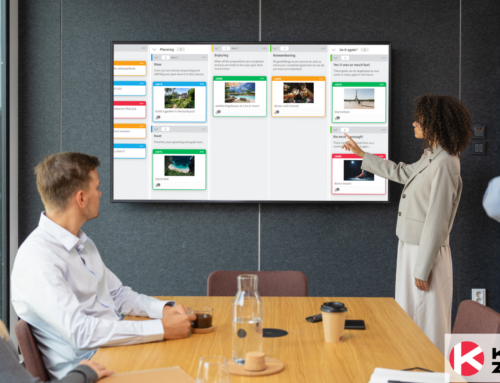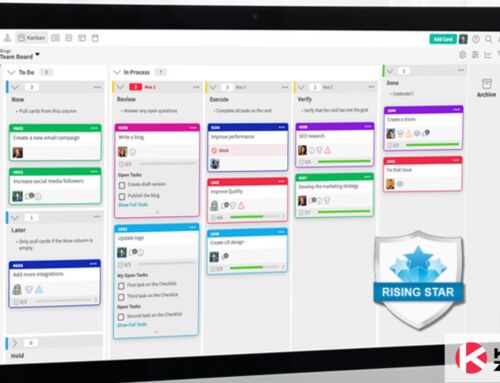
A time of crisis is a time of turbulence, constant changes, and continuous adaptation. And during this time, we can learn a lot from the Agile methodology to get through and survive a crisis. When quick decisions are demanded left and right, companies need to stay nimble but grounded by an anchor of values that guide their decision-making and actions.
More companies were drawn to adopt Agile since the pandemic started. Digital.ai’s 14th annual State of Agile Report includes a follow-up survey to assess the impact of COVID-19 on Agile adoption. Results of this supplemental survey showed an increase in Agile adoption efforts by 33% in response to the COVID-19 crisis. More companies are recognizing the benefits of Agile. But what is it that makes it viable in a time of crisis?
What is an Agile Mindset?
Before we talk about the Agile mindset, let’s discuss what Agile is about. Agile has become a buzzword in recent years but it’s certainly no fad or trend. Agile is a philosophy for delivering quality solutions that delight customers through evolutionary change. Agile was conceptualized by 17 software professionals in 2001 and has seen its growth outside tech in the last decade. While its use and principles are mainly for software development, it has been adapted to fit other industries. Agile is harnessed to foster a working environment that is focused on the following:
- Building self-managing teams that respect each other
- Collaboration and innovation
- Quick delivery to draw feedback
- Meeting high-levels of customer value through quality solutions and products
- Building a sustainable pace for development
- Adapting and embracing change
- Continuous learning and improvement
This is what an Agile mindset is about. The agile mindset is a set of attitudes and behaviors that enable teams to create a working environment characterized by the seven outcomes listed above. When teams go Agile, they are guided by the Agile Manifesto and its principles to get these seven intended outcomes.
Why Adopt Agile Now?
Now that we know what the Agile mindset is, you might be wondering why now is a great time to adopt Agile. COVID-19 has rocked business globally to its core, especially small businesses. It has pushed everyone out of their comfort zones and even some out of business. These trying times call for a change in mindset. Agile can be that paradigm shift that will propel your business to new heights even during these turbulent times.
We face a lot of uncertainties with this crisis brought about by COVID-19. During the onset of the pandemic, most businesses were pushed to close shop. Other businesses found refuge in remote work and telecommuting. But as there is no definite end to this pandemic yet, we can only expect the unexpected. But that doesn’t mean we can’t get ready for it.
I feel that the saying “Pivot or die.” is applicable in this crisis setting. Adopting an Agile mindset allows businesses to install mechanisms that enable them to embrace change and pivot as needed.
Here are more ways on how implementing an Agile methodology to your business will help you get through the uncertainty of a crisis.
Establish a Regular Cadence to Perform Work
Agile methodologies are characterized by regular cadences or intervals to perform work. These allow teams and businesses to assess their progress and situation and decide the best way to move forward. They can then factor in any uncertainties and risks and come up with mitigation plans. This also pushes teams to continuously collaborate and keeps them motivated to push onward.
Conquer Overwhelm
When changes come at you left and right, it’s easy for any team or organization to get overwhelmed. Adopting an Agile mindset will teach your teams to break down your work into manageable chunks. This will allow you to incrementally work on your deliverables in regular iterations. Agile recommends delivering work in a shorter timescale and smaller batches so you can easily adapt to change.
Adapt to Change
When you adopt Agile, you can course-correct as needed in between your intervals. And because you are doing work in smaller but usable chunks, waste on time, effort, and resources are minimized if you have to change your solution. Delivering work faster and smaller allows you to get feedback earlier as well. And in time of crisis, it’s important to know whether your solution is still relevant or not. When teams adopt Agile, you will have better change management and you will be better attuned to your customers’ needs.
Keep Teams Motivated and In-Sync
This crisis has affected employees’ well-being as well. Many have grown anxious and wary of their employment. Implementing an Agile methodology will offer that sense of belongingness and normalcy that you and your employees will benefit from. While Agile favors face-to-face interactions, if you’re working with a remote team because of the pandemic, you can still use video conferencing tools for your team communications. What’s important is you collaborate constantly and you establish a supportive environment that empowers your teams. And this is what you can achieve when you go Agile.
How to Adopt Agile
An Agile transformation takes a significant amount of work and one where it starts with a mindset shift. I would highly recommend seeking the help of an Agile professional coach or trainer to start your transition. As this would require an investment, talk with your company leaders if you can allocate some of your budget to this endeavor. If not, then maybe it’s something that you can work on for future planning.
But that’s not to say you can’t start your Agile journey. Here are some quick ways in which you can apply the Agile mindset to your business.
Deconstruct Your Work
Instead of doing big bang projects, break down your deliverables into usable smaller chunks. Then prioritize what must be done first.
Establish Your Own Rhythm
This means performing work in fixed time-intervals. In Scrum, one of the most popular Agile methodologies, we have the concept of Sprints. Sprints are time-boxed periods by which teams perform and complete their work. You can introduce a similar concept by introducing time-boxes to your team’s tasks. You can set weekly goals and agree on what you want to deliver by the end of the week.
Make Your Work Visible
Apart from breaking down your work into smaller pieces, it’s also beneficial to have a way to visualize your work. Kanban is another Agile methodology that you can explore for this. Kanban has its own set of practices and properties that are aligned with the Agile mindset. It’s main tool is the Kanban board that allows teams to effectively visualize their work. These practices will enable you to better manage your workflow and spot risks and issues much faster.
Introduce Venues for Teams to Inspect and Adapt
Agile is big on learning collaboratively. In Scrum, we have ceremonies that allow teams to discuss their progress and reflect on their work. You can have your version of these ceremonies to collaborate with your team regularly. This will help you stay on top of your project deliverables and assess whether there’s room for improvement and if you need to change course.
These are just some tips on how you can start your Agile transformation. You don’t have to start with the whole organization. You can start applying Agile practices to your team or on specific processes you manage.
Here are more specific resources that we have readily available for teams looking to adopt Agile in certain niches.
- How to Build an Agile Recruitment Process with Kanban
- Using Kanban for Risk Management in Agile Projects
- How Implementing Agile Project Management Can Benefit Healthcare
- Use Agile Marketing to Grow Your Business
Adopting an Agile Mindset to Get Through a Crisis
Implementing Agile will not only help you get through this crisis. It will also empower you and prepare you for what lies beyond this crisis. In the face of uncertainty, Agile provides the structure to handle change. It most certainly puts focus on how the team’s work and in building an empowered team. Agile recognizes that the best solutions come from highly motivated and empowered individuals. This is one of the most important outcomes of adopting an Agile mindset. To adopt Agile, you must have highly collaborative teams that drive the business forward. And that’s how you’ll get through this and any crisis that comes afterwards.
Learn to Work Smarter, Not Harder!
Get our top articles weekly.
Table Of Contents
Discover many more posts…







